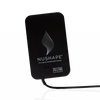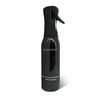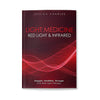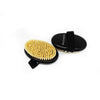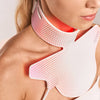-
The Psychological Benefits of Red Light Full Body Therapy
In the blossoming field of wellness, red light full body therapy shines as a comforting beacon for individuals wrestling with mental health woes. At Nushape, we harness the gentle caress of red light therapy to pave a serene path towards enhanced cognitive function and mood stabilization. This article dives into the world of wearable red light technology, particularly spotlighting Nushape’s state-of-the-art NeuroPulse Pro, crafted... -
Discover How Red Light Therapy and Keto Benefit One Another
In the holistic narrative of wellness, the alliance between red light therapy and the Ketogenic Diet sketches a profound script of health benefits. Here at Nushape, our passion for innovation in light therapy propels us to delve into this fascinating synergy. This article aims to spotlight the realms of weight loss and the harmonious expression of primary sex hormones orchestrated by this duo. The... -
The Importance of Red Light Therapy for Immune System Support
In an age where wellness is paramount, red light therapy emerges as a beacon of hope for those seeking to bolster their immune system. This article delves into the science behind red light therapy and its potential to enhance immunity, offering insights into how Nushape’s wearable red light products can be integrated into your wellness routine. How Red Light Therapy Boosts Immune System Our bodies, akin to plants, thrive under the right light.... -
Red Light Therapy and Weight Loss
Healthy weight loss could be challenging nowadays, mostly with the dieting industry, generally promoting restriction, which we all know by now leads to compulsion. To lose weight in a healthy way, we need to rework our relationship with food, understand what triggers us and rethink our lifestyle. The body and the mind go together, are intimately linked and can not be separated, so to... -
Red Light Therapy and Pain Relief
Red light therapy has become increasingly popular as a non-invasive and non-pharmacological treatment option for various conditions, including pain relief. This therapy works by exposing the body to low-level wavelengths of red or near-infrared light that can penetrate the skin and tissue to reach the underlying cells. Red light therapy has been shown to have a range of beneficial effects on the body, including... -
Living With Multiple Sclerosis: Discover The Possibilities With RLT AND PEMF
Living with multiple sclerosis (MS) can be challenging, but exciting developments in supportive treatments like red light therapy (RLT) and pulsed electromagnetic fields (PEMF) offer hope for those seeking to improve their quality of life. These therapies have the potential to enhance your well-being by addressing various MS symptoms. MS is a neurological disorder that affects the central nervous system, including the spinal cord...
Thyroid Light
Timeline
Nushape exists to develop top-tier, industry-leading LED light therapy devices for photobiomodulation. Implementation of specific wavelengths of LED light can effectively enhance bodily processes by improving mitochondrial health, ATP production; ultimately aiding the cellular ability to work faster, stronger.
















